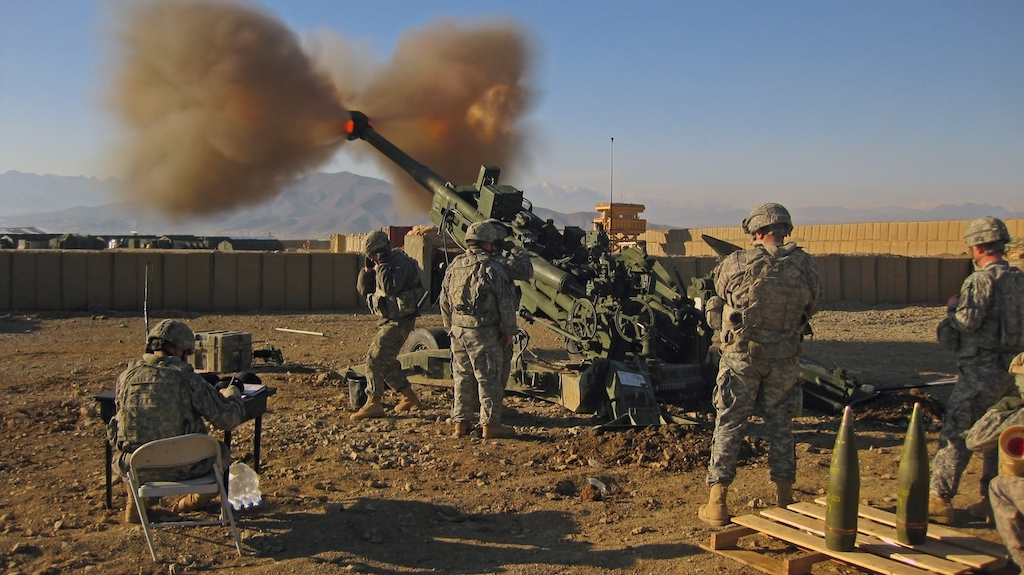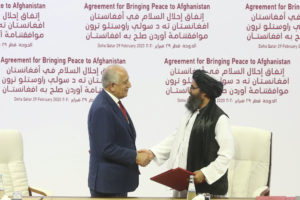The U.S. Military Is Destroying the Environment
Imperialism doesn’t just kill people; it kills the earth. U.S. soldiers in Afghanistan. (Jonathan Mallard / CC BY 2.0)
U.S. soldiers in Afghanistan. (Jonathan Mallard / CC BY 2.0)
The increasingly horrific warning signs on climate change include the suggestion that the earth already has warmed 1.5 degrees Celsius since the start of the Industrial Revolution and that we have only 12 years at which we can sustain this level, according to the Intergovernmental Panel on Climate Change (IPCC).
The goals to ward off irreparable harm, however, are as Sisyphean to accomplish as they are necessary for human survival. That’s partially because of who is doing the polluting, in particular fossil fuel companies. However, a less well known, but equally culpable, player is the U.S. military. As Murtaza Hussain writes in The Intercept, “the largest industrial military in the history of the world is also the single biggest polluter on the planet.”
A June report from Brown University’s Costs of War project reveals “the DOD is the world’s largest institutional user of petroleum and correspondingly, the single largest producer of greenhouse gases in the world.” A similar study released just weeks later from Durham and Lancaster universities in England concurred, finding that, as Popular Mechanics reported, “its fuel emissions alone would make it the 47th largest emitter of greenhouse gases in the world.”
The war in Afghanistan, to Hussain, is a particularly glaring example of how the U.S. pollutes abroad, with no redeeming value:
That massive additional burden on the planet might be justifiable were it all being done in the name of vital national security interests, but the biggest components of the U.S. military’s carbon dioxide footprint have been in wars and occupations that were almost entirely unnecessary. To put it crudely: The U.S. poisoned the planet for vanity projects.
The Iraq war, too, Hussain writes, “led to a spike in carbon dioxide emissions through U.S. military activity, it resulted in the widespread poisoning of the Iraqi environment through the use of toxic munitions and the same so-called burn pits on military bases that were used in Afghanistan.”
The injustices of invasion include environmental destruction. Hussain explains:
In addition to emitting millions of tons of carbon dioxide during the war, the U.S. military footprint contributed more directly to the immediate destruction of the Afghan environment. Deforestation has accelerated amid the chaos of the war and, through trash burning and other means, the U.S. armed forces released toxic pollutants into the air that are blamed for sickening Afghan civilians and causing chronic illnesses among U.S. veterans.
Compounding the problem is that even when the United States attempts to take responsibility for the pollution of war, it focuses mostly on threats to its own resources and equipment and not the damages to the countries it invades.
U.S. military “climate policy is fundamentally contradictory,” said Patrick Bigger, of Lancaster University Environment Center and a coauthor of the study said in a media statement. He added this is because the military is”confronting the effects of climate change while remaining the largest single institutional consumer of hydrocarbons in the world, a situation it is locked into for years to come because of its dependence on existing aircraft and warships for open-ended operations around the globe.”
If those who care about the future of the planet don’t take massive action, Hussain writes, the result will be even more exploitation of the countries that least protect against it: “Faced with a planet that is clearly at the limits of the abuse it can take, the groundwork is still being laid for more exploitation and violence.”
Your support matters…Independent journalism is under threat and overshadowed by heavily funded mainstream media.
You can help level the playing field. Become a member.
Your tax-deductible contribution keeps us digging beneath the headlines to give you thought-provoking, investigative reporting and analysis that unearths what's really happening- without compromise.
Give today to support our courageous, independent journalists.






You need to be a supporter to comment.
There are currently no responses to this article.
Be the first to respond.